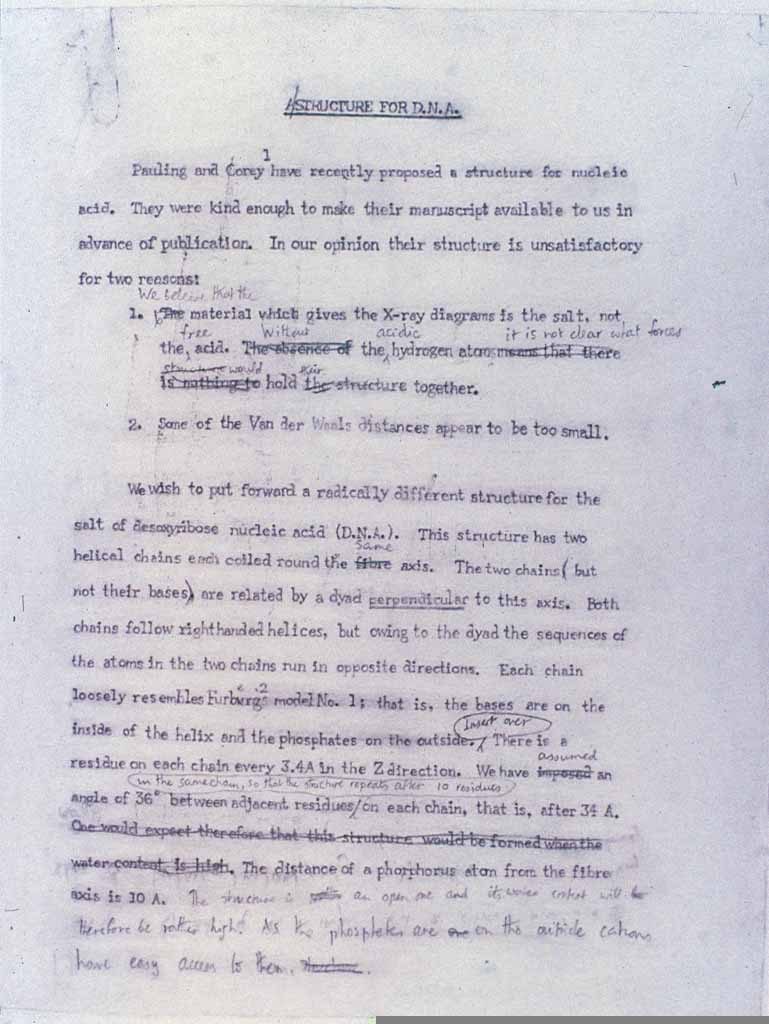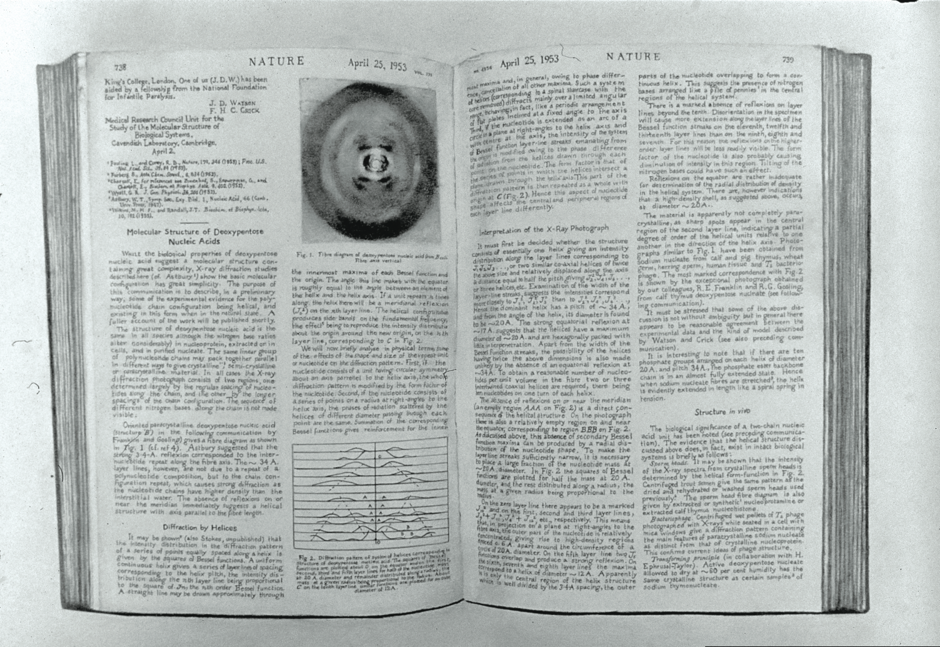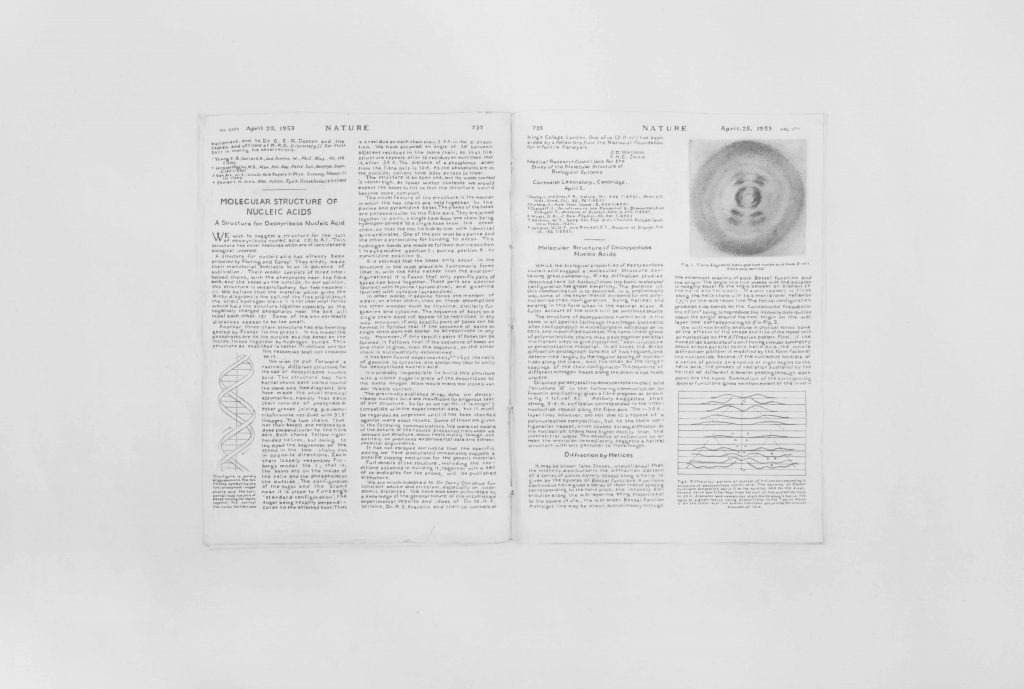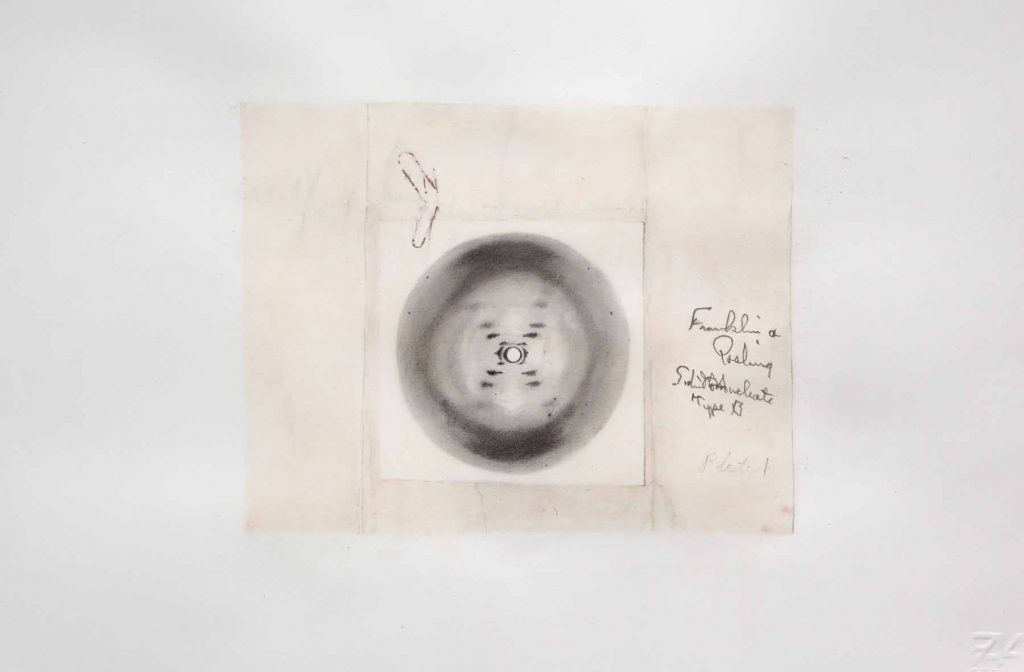DNA (Drawings)
In 2003 I was awarded a commission to work on a Wellcome Trust cross-disciplinary research project that gave me unique access to the Francis Crick Archive. The resulting exhibition Four Plus: Writing DNA Writing DNA looked at how the raw data – the human aspect of discovery – becomes history. In order to scrutinise the archival material in detail, I produced a series of six pencil drawings from Francis Crick’s drafts of the DNA theory entitled First Draft.




Alongside these drawings of Crick’s annotated notes, I also reproduced the pages from the published theory in the scientific journal Nature using the same method of drawing. This work was exhibited at The Wellcome Institute in London and the project was shortlisted for the Prospects Drawing Prize. The work was discussed widely in the context of the 50 year anniversary of the DNA discovery in the national press, international press such as the Washington Post, in journals such including the British Medical Journal and Nature and on the BBC news.
Pnina Geraldine Abir-am in the journal Minerva noted that:
‘…………….. (the works) all seek to shed new light on an event that has enjoyed considerable publicity, even notoriety in films, plays, and exhibitions. It is of interest to see how they manage to contribute different perspectives on the ‘same’ event.’ [1]
Sian Ede discusses this work in her book Art and Science:
‘…………… The most resonant pieces in the show for me were documentary, the memories of artist Penny McCarthy, who made pencil drawings of the seminal 1953 Nature paper, inspired by the fact that her father worked alongside Crick and Watson in the 1960. The way she described the gentleness of the father/daughter relationship sharpens the implications of a science that has a supreme grasp of the true meaning ‘family’. Little glimpses of family life come over as touching and also somehow portentous: ‘in our house his clones lived in the fridge and in searching for the butter you always ran the risk of knocking them over,” she writes. For me the letters DNA are the fragments of an overheard conversation, incompletely understood.’ [2]
Although I made this years ago, it has been a pivotal series for me and it still feels imperative in some highly personal way. I think I will come back to it soon.
[1] Abir-Am, Pnina G. DNA AT 50: Institutional and Biographical Perspectives, Minerva (Netherlands)42: 191–213, 2004. See also Abir-Am, DNA at 50: History, Memory, and Moral Genealogy Minerva(Netherlands), XLII (2004)
[2] Ede , Sian, Art and Science 2005, pub. I.B.Taurus, p.153
